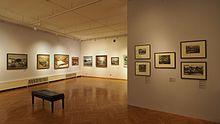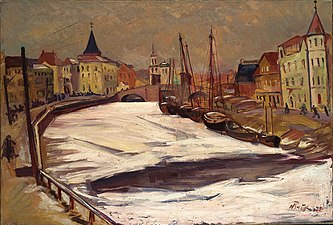
Tartu is the second largest city in Estonia after Tallinn. Tartu has a population of 97,435. It is 186 kilometres southeast of Tallinn and 245 kilometres northeast of Riga, Latvia. Tartu lies on the Emajõgi river, which connects the two largest lakes in Estonia, Lake Võrtsjärv and Lake Peipus. From the 13th century until the end of the 19th century, Tartu was known in most of the world by variants of its historical name Dorpat.

The Kumu Art Museum is an art museum in Tallinn, Estonia. It is one of the largest museums in Estonia and one of the largest art museums in Northern Europe. It is one of the five branches of the Art Museum of Estonia, housing its main offices.

The National Museum of Serbia is the largest and oldest museum in Belgrade, Serbia. It is located in the central zone of Belgrade on a square plot between the Republic Square, formerly Theatre Square, and three streets: Čika Ljubina, Vasina and Laze Pačua. Its main facade is on the Republic Square and the official address ia 1a Republic Square.
Eduard Wiiralt was a well-known Estonian graphic artist. In art history, Wiiralt is considered as the most remarkable master of Estonian graphic art in the first half of his century. The best-known of his works include "Inferno", "Hell", "Cabaret", "Heads of Negroes", "Sleeping Tiger", and "Head of a Camel".

The National Art Museum of the Republic of Belarus is the largest art museum in Belarus and is located in its capital, Minsk. The museum comprises more than thirty thousands works of art which make up twenty various collections and constitutes two main ones: the one of national art and the other of art monuments of various countries of the world.

Pallas University of Applied Sciences is a university of applied sciences that provides art education in Tartu, Estonia. It was founded on 1 August 2000. The university is situated in Karlova. The rector is Vallo Nuust.

Liis Koger is an Estonian painter and poet based in Tallinn.

Estonian Museum of Architecture is an architecture museum in Tallinn, Estonia. It is located in the Rotermann quarter. The museum is a member of ICAM.
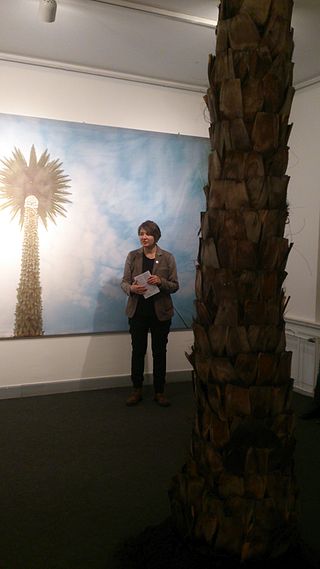
My Poland. On Recalling and Forgetting is the first Holocaust-themed art exhibition in Estonia, taking place at Tartu Art Museum in early 2015, seventy years after the end of World War II and the liberation of the Nazi extermination camps.

Rael Artel is an Estonian art writer, curator and gallerist. Since 2013, she has been the director of Tartu Art Museum in Estonia.

Karl Pärsimägi was an Estonian Fauvist painter. He was murdered in Auschwitz concentration camp after being arrested in Paris.
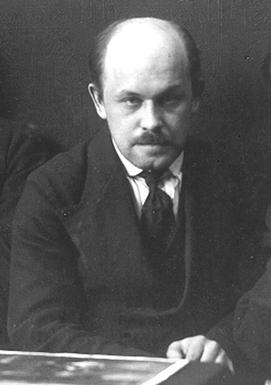
Nikolai Voldemar Triik was an Estonian Modernist painter, graphic artist, printmaker and professor. His work displays elements of Symbolism and Expressionism.
Ellinor Aiki was an Estonian painter who is possibly best recalled for her works in later life of vibrant and colorful, heavily textured portraits, landscapes and compositions interspersed with whimsical motifs.
Malle Leis was an Estonian painter and graphic artist. Her works mostly represent abstract forms in nature, including flowers, fruits, and vegetables. She developed a silk screen technique that became her trademark.
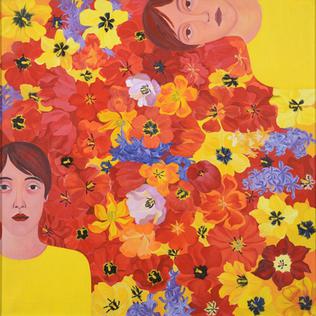
Young Gardeners is an oil painting by Malle Leis in the Tartu Art Museum.
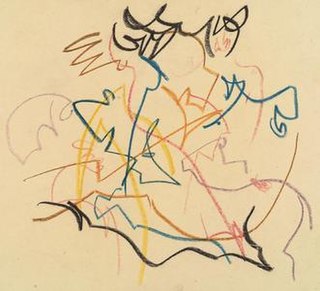
Paraphrase E is one of a series of avant-garde drawings called paraphrases by Ado Vabbe in the Tartu Art Museum.
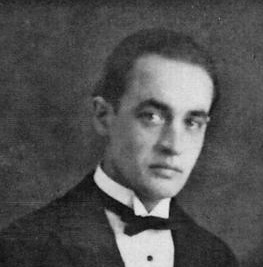
Kuno Veeber was an Estonian painter and graphic artist whose career began in the late 1910s.

Agaate Veeber was an Estonian graphic artist and illustrator who began her career in the 1920s in her native country of Estonia and continued in the United States after immigrating in 1948.
Aino Bach was an Estonian artist known for her engravings and her portrayals of Soviet-era femininity.
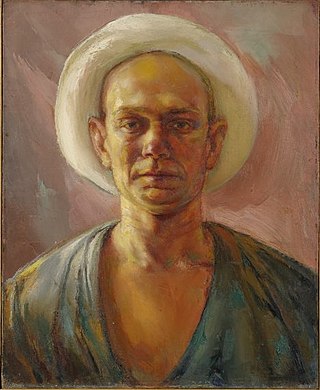
Kaarel Liimand was an Estonian painter.

